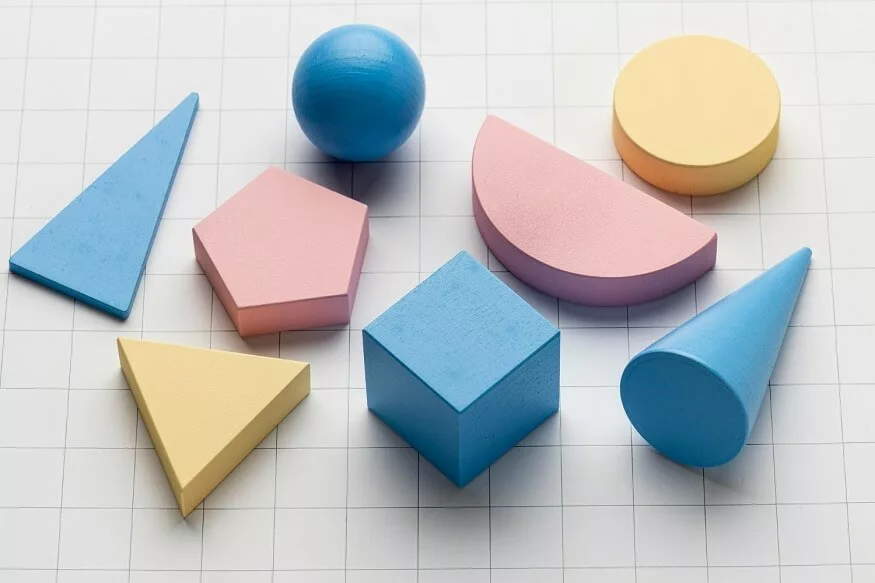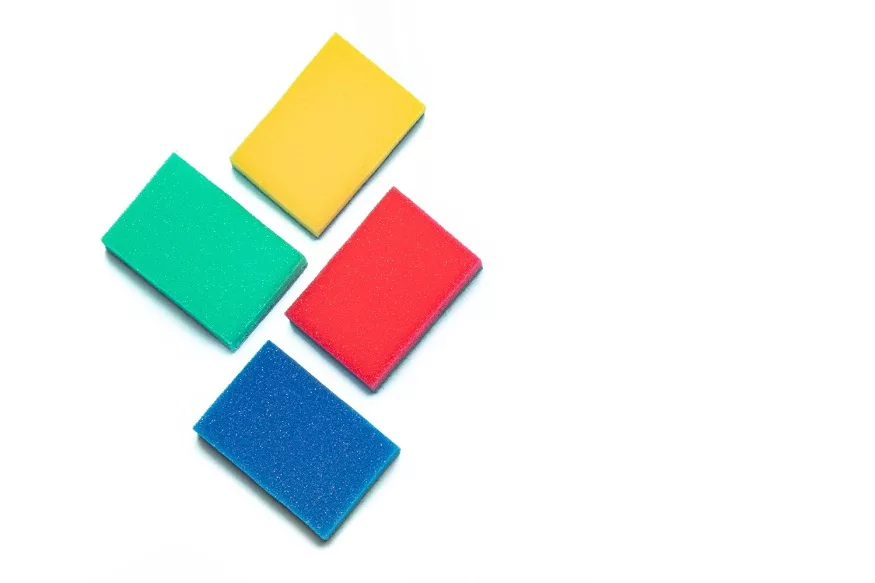Step into the captivating world of geometric constructions, where a compass and straightedge become your creative tools, crafting precision in shapes. Join us on this enlightening journey to unlock the ancient secrets behind bisectors, perpendiculars, and triangles. It’s not just about learning “how” but understanding the “why” of these fundamental geometric figures. Here, we reveal that geometrical figures are more than lines and angles; they’re the keys to unravelling timeless mysteries in shape, symmetry, and problem-solving.
The Rich History of Geometric Constructions
The art of geometric construction is a time-honoured tradition that traces its roots back to ancient civilizations. Mathematicians, architects, and scholars in antiquity recognized the power and elegance of constructing precise geometrical figures using minimal tools. Ancient Greece’s brilliant minds, like Euclid, and the Renaissance’s ingenious architects, were pivotal in shaping the evolution of mathematics and design. This enduring practice laid the foundation for modern geometry and still inspires those unravelling the mysteries of shapes and symmetry.
Also Read: Top 10 Ways to Utilise Maths Formulas in Day-to-Day Life
Highlighting lesser-known facts about geometric constructions:
Geometrical constructions, an ancient art, find their roots in civilizations like Egypt and Mesopotamia. Ancient Greek mathematicians, most notably Euclid, laid the foundation for systematic geometric constructions. While some tasks, such as trisecting an angle or squaring the circle, are proven impossible using a compass and straightedge, it’s fascinating that regular polygons can be constructed by dividing a circle.
The influence of geometrical figures extends beyond mathematics; they have inspired art and architectural designs for centuries and continue to be employed in modern engineering and computer-aided design. Geometrical constructions also served as intriguing puzzles created by famous mathematicians. This ancient art form bridges the past with the practical applications of modern Euclidean geometry, enriching our understanding of shapes and spaces.
Also Read: Why Studying Maths is Important for Children
The Essence of Geometric Constructions: A Deeper Dive
Before we dive into the intricacies of constructing specific figures, let’s anchor ourselves with a firm understanding of the core principles that underpin geometric constructions.
Understanding Geometric Constructions
Geometric constructions are not mere mechanical procedures; they are the very essence of geometry brought to life. This art form, rooted in centuries of mathematical exploration, is an elegant marriage of precision and creativity. With nothing more than a compass and straightedge, you’ll learn to create perfect geometrical figures. There’s no room for measurements or numerical values; it’s about achieving pure, unadulterated precision in your designs.
Also Read: Tips to Solve Maths Puzzles for Class 4 Students
Mastering the Magic of Bisectors
Now, let’s delve into the enchanting world of bisectors and their indispensable role in the realm of geometry.
The Enigmatic Bisectors: Dividing Lines, Angles, and Shapes
Bisectors, often regarded as the unsung heroes of geometry, possess an enchanting power—the ability to divide lines, angles, and shapes into two perfectly equal parts. Their significance transcends mere division; they unlock hidden symmetries, solve complex problems, and enrich our understanding of the world of geometric forms.
By exploring the enchanting art of geometrical constructions and the profound role of bisectors, you embark on a journey of discovery and mastery, where lines and angles become your canvas, and the compass and straightedge your brushes. This is the gateway to a realm where precision meets creativity, and the “how” and “why” of geometric figures are intricately intertwined.
Constructing a Line Bisector
We start with the simplest of them all, bisecting a line. How to do it step-by-step is as follows:
- Draw the line you want to bisect.
- Place your compass at one end and draw an arc.
- Without changing the compass width, repeat this at the other end.
- The intersection point of the arcs is the bisector of the line.
Perpendiculars: Where Lines Intersect at Right Angles
Understanding Perpendicular Lines
Perpendicular lines create right angles where they intersect. They are fundamental in geometry.
Constructing a Perpendicular Line
- Begin with a given line segment.
- Use your compass to mark a point on one end.
- Without changing the compass width, place the compass on the other end and mark another point.
- Connect these two points with a straight line to form a perpendicular line to the original segment.
Also Read: Maths Puzzles for Grade 2
Exploring Triangles: A Journey Through Shape and Symmetry
Triangles are the cornerstone of geometry, with various properties and types.
Constructing an Equilateral Triangle
Equilateral triangles have three equal sides. To construct one:
- Draw a line segment for one side.
- Mark two equidistant points using your compass.
- Connect these points, forming an equilateral triangle.
Constructing an Isosceles Triangle
Isosceles triangles have two equal sides. Here’s how you construct one:
- Draw the base, representing the two equal sides.
- Use your compass to mark two equidistant points on the base.
- Connect the vertex to these points to create an isosceles triangle.
Constructing a Right Triangle
Right triangles contain a 90-degree angle. Constructing one involves:
- Draw one side.
- Mark a point using your compass, which will be a vertex of the right angle.
- Create a perpendicular line from the endpoint of the side to the marked point to form a right triangle.
Also Read: What are the different lines in Math?
Uses of Constructions
Geometric constructions, though rooted in mathematical principles, have far-reaching applications in our daily lives. The skills you gain in this ancient art form are not confined to textbooks; they find practical relevance in various aspects of our everyday existence.
- Architecture and Engineering: When architects design buildings or engineers plan structures, they often rely on geometric constructions to ensure precise measurements and symmetrical designs. Constructions play a vital role in constructing stable and aesthetically pleasing edifices.
- Design and Art: Artists and designers use geometric constructions to create symmetrical and visually pleasing artworks. From fashion designers sketching patterns to graphic designers crafting logos, construction is a valuable tool for achieving balance and precision in design.
- Carpentry and Woodworking: In the world of carpentry and woodworking, geometric constructions come in handy for creating precise angles, shapes, and patterns. Craftsmen use these skills to build furniture, design intricate wooden inlays, and construct flawless joinery.
- Crafting and DIY Projects: In crafting and DIY projects, geometric constructions are invaluable. Whether sewing, quilting, or tackling home improvements, the precision in shaping and angles elevates your work’s quality.
- Problem-Solving: Beyond specific fields, the problem-solving skills honed through geometric constructions can be applied to everyday challenges. Whether you’re arranging furniture in a room, optimising storage space, or even planning a garden layout, these skills empower you to find practical and visually pleasing solutions.
Mastering geometric constructions is your gateway to the core of geometry. Crafting bisectors, perpendiculars, and triangles not only deepens your geometric knowledge but also offers an enjoyable hands-on experience. With every practice session, you become a true artisan in the world of geometric construction, where the ancient art of precision lives on.
Also Read: Tips to Solve a Rubik’s Cube for Kids
This journey is an immersive exploration that unravels the secrets of shape, symmetry, and problem-solving, connecting theory with practice, and evolving your skills into a tangible mastery. The compass and straightedge are your trusted allies in this enduring voyage of geometry, where timeless mysteries await your interpretation.
At EuroSchool, we invite you to embark on an enlightening journey into the world of geometric constructions. Our program focuses on mastering the ancient art of creating precise geometrical figures using the fundamental tools of a compass and straightedge. Through engaging lessons and hands-on experiences, students discover the intricacies of constructing bisectors, perpendiculars, and triangles. We aim to not only impart the “how” but to deepen the understanding of the “why” behind these fundamental geometric figures. At EuroSchool, we believe that by mastering these skills, students not only enhance their knowledge of geometry but also develop invaluable problem-solving skills. Join us in the pursuit of excellence as we nurture the budding artisans of geometry.










